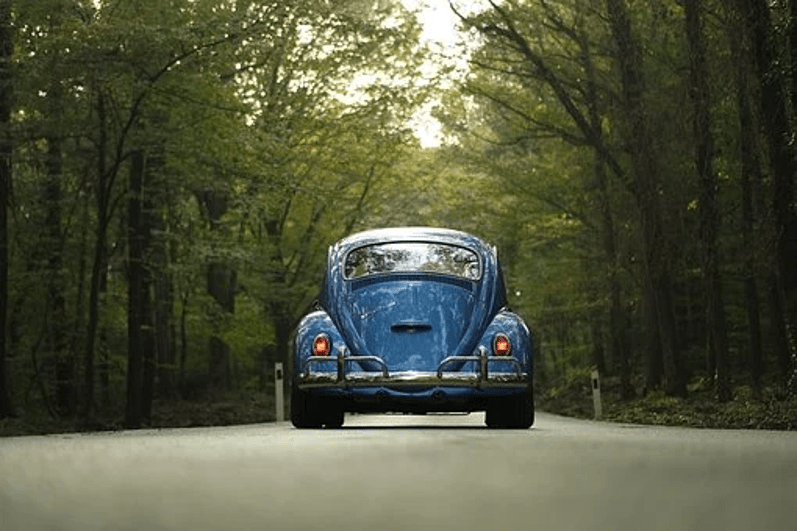Classic cars are very popular among collectors. It’s no secret that classic vehicles appreciate in value, either, making them a great choice for investors. However, registering a classic car in the United States is not as straightforward as you might like to think that it would be. In fact, in many states, if a car is beyond a certain age, it cannot legally be driven other than to shows and for historical events.
This article will explore this subject, offering some tips on registering your classic car, driving it, and most important of all, maintaining it:
What Is a Classic Car?
A classic car is an antique vehicle, defined under Californian law as a vehicle that is 39 years old, or older. If a vehicle is a classic car but has also been worked on by its owner, then it must also be registered as a custom car, custom meaning customised. The reason that a distinction has been drawn, separating classic cars from modern cars is that classic ones are often bulkier and harder for amateurs to drive, resulting in car accidents. It’s also no secret that classic cars are nice to look at, which distracts other drivers. Distracted driving is one of the most common auto accident injuries in Orange County, California. If you have a vehicle that you have been working on, that has parts from classic cars you will need to explain this to the DMV when registering your vehicle.
How Do You Register a Classic Car?
If you want to register a classic car in the state of California, unfortunately, you are not able to go online and have your car registered as you would with a new, modern car. The process is a lot more complex and somewhat drawn out. The process is similar in many other American states, also. If you aren’t in California, then you will have to research the process in your own state.
In order to register your classic car in California, you need to phone up your local DMV office and make a physical appointment. Make sure that you mention on the phone the appointment is regarding your classic car’s registration. Your first appointment is part of the verification process, whereby you produce evidence showing your ownership of the car, bills of sale for vehicle parts, and invoices for work if you have had work carried out on the car. If you cannot find proof of ownership, you will have to take out a vehicle bond.
Once you have verified ownership, you can go ahead and register your car. Remember, if you drive your vehicle without registering it, you can have your car seized and can get into a lot of trouble. Many classic car drivers don’t bother registering their cars, because they never drive them. This unfortunately sometimes results in them losing their vehicles. If your classic car is your pride and joy, then don’t take any chances with it. Make sure that it’s registered whenever you intend on driving it, even if you’re only driving it around your property.
Maintenance Tips
Keeping Your Car Clean
If you own a classic car, then you need to make sure that you keep it clean. If you do not ensure that your vehicle is kept clean, then dirt can get in between the seats and in other hard to reach areas. In addition, if your car’s dirty and stored in a humid environment, then it’s entirely possible that mould could grow. Mould growth inside your car’s interior could result in its value plummeting, and the car becoming unusable.
Unnecessary Modifications
You also need to avoid making unnecessary modifications. One of the worst things that you can do to a classic car is trying to make it modern. Classic cars are charming the way that they are. If you need to make any changes to it, either pay a professional to do it for you or do your research so that you can do it yourself, but whatever you do make sure that you do not unnecessarily change the car unless you are lowering it in order to make it a lowrider or adding an internal sound system so that you can listen to music while you cruise.
Keep It Original
If you are going to make changes to your car, then try to use original parts. Your car’s value skyrockets if you exclusively use original parts when making changes or repairing the car. If you use new parts, then its value decreases, because it is essentially just a classic car shell, on new parts. Finding working parts for classic cars can be very difficult, which is part of the fun of restoring them and driving them. You can find them on sites like eBay and Etsy, as well as Craigslist.
Perform Regular Maintenance
Make sure that you perform regular maintenance, fixing any issues that arise. If you allow any problems to go unchecked, they can deteriorate very quickly, potentially damaging your car’s engine and other parts. Regular maintenance is absolutely essential. If you are not confident performing maintenance on your car yourself, then you can take it to a professional mechanic who can do it for you. If you are going to take it to a mechanic, try to find one that specialises in classic cars. You don’t want somebody who’s never touched a car like yours before tampering around with it, because they could potentially break it.
Store It Properly
Finally, you need to ensure that you store your car properly. This is to protect it from the weather and elements, and also from theft. Because some classic cars are very valuable, if you do not store them safely, they could be stolen. People could try to steal the entire car, or they could try to take parts from it. It’s not uncommon for the hood ornaments of antique cars to be stolen by people who then turn them into jewellery, mainly necklaces.
If you are fortunate enough to own a classic car, then you need to make sure that you maintain it properly. In addition to maintaining it, you need to make sure that you get it registered with your local DMV office.














